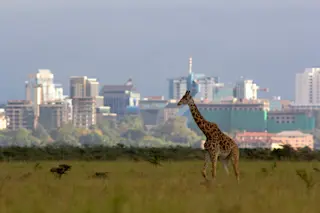Human-wildlife overlap is projected to increase across more than half of all lands around the globe by 2070. The main driver of these changes is human population growth. This is the central finding of our newly published study in the journal Science Advances.
Our research suggests that as human population increases, humans and animals will share increasingly crowded landscapes. For example, as more people move into forests and agricultural regions, human-wildlife overlap will increase sharply. It will also increase in urban areas as people move to cities in search of jobs and opportunities.
Animals are also moving, mainly in response to climate change, which is shifting their ranges. Across most areas, species richness – the number of unique species present – will decrease as animals follow their preferred climates. But because human population growth is increasing, there still will be more human-wildlife overlap across most lands.
We also found areas ...














